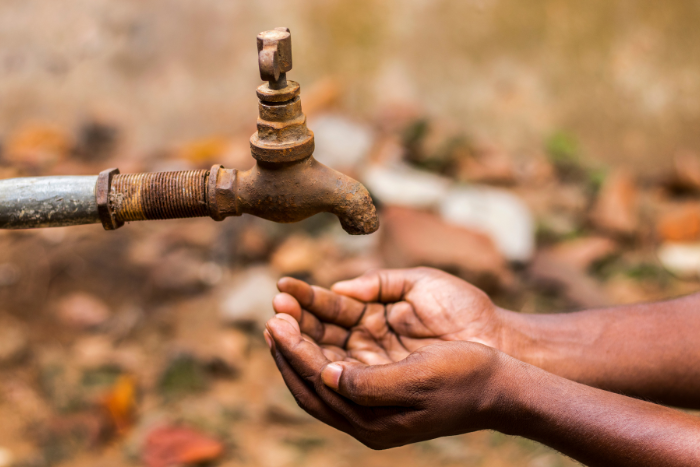Shortage in rainfall in 2023 has exacerbated the water crisis in Bengaluru, India’s Silicon valley which is witnessing unusual sights of IT workers skipping office and waiting in long queues to fill their buckets from water tankers. The water tanker arrives once every two weeks, its 1,000 liters expected to serve hundreds of people.
Experts warn it is only going to get worse as mercury levels climb in the lead up to summer. They said the crisis is man made because since the early 1990s, Bengaluru has undergone rapid urbanization, as its transformation into a major tech center resulted in exponential growth. Developers cut down the forests and built around its lakes as the city of about 4 million exploded to house more than three times that. As layers of tarmac swept through the city, Bengaluru lost its ability to absorb water, today 83% of Bangalore is covered in concrete, CNN reported.
Onion and potato production to decline this year: Centre report
According to the latest central government report cited by DTE, onion production is expected to decline by about 15% and potato by 2%. The First Advance Estimates of horticultural crops for 2023-24 released by the Department of Agriculture and Farmers Welfare on March 7, 2024, states that onion production in 2023-24 is expected to be around 25.47 million tonnes (MT), compared to last year’s production of about 30.21 MT. Onion production this year is therefore expected to be lower than last year.
Lower output and harvesting of summer-sown onion due to extreme weather prompted the government to ban exports in December. A series of hailstorms in states such as Maharashtra damaged both summer and late-summer varieties this financial year, HT reported
Inclement weather and depleting groundwater is likely to reduce the acreage of onion crop, according to earlier estimate by the government Rabi onion production may drop to 165-lakh tonnes (lt) in the 2023–24 season from 220 lt last season, reported the Hindu.
Production may be lower at 3.43 MT in Maharashtra, 0.99 MT in Karnataka, 0.35 MT in Andhra Pradesh and 0.31 MT in Rajasthan this year, the report said. Similarly, potato production in 2023-24 is expected to be around 58.99 MT, as against 60.14 MT last year, due to a shortfall in West Bengal over the previous year, DTE reported.
2023 flood in Sikkim drowns farming and fishing opportunities in northern West Bengal
The sand and silt from the October 2023 flood in Sikkim has covered the agricultural fields along the Teesta riverbanks in the neighbouring state of West Bengal, farmers and fishers are facing difficulties in accessing government aid because of property rights and land ownership issues, Mongabay reported. Every year the farmers of the region during this time of the year grow potatoes, green peas, bottle gourd, cabbage, cauliflower and various other vegetables that are in high demand in the market, but this year entire field has been rendered barren because of the silt.
The flood in Teesta river in the neighbouring state of Sikkim impacted croplands along Teesta’s riverbanks in West Bengal, spanning a 22 kilometre stretch from Gajoldoba (No.12 village) to Chapadanga, the report said.
Warming waters lead to increased habitat suitability for juvenile bull sharks
According to a new study, historic changes to land use and land cover (LU/LC) along with increasing temperatures linked to climate change is increasing the presence of bull sharks in Mobile Bay – an estuary of the Gulf of Mexico. The abundance of young bull sharks have increased fivefold over the past two decades. Using data on a range of environmental conditions, including oxygen levels, salinity and temperature, researchers model the suitability of the estuary for bull shark habitat. They find that the average suitability has increased from 0.028 to 0.082 over 2003-20, coinciding with “substantial increases” in average temperatures. The authors conclude: “As climate change persists, coastal communities will continue to change, altering the structure of ecological communities and the success of nearshore fisheries.”
US energy industry methane emissions are three times more than government thinks, study finds
A new study calculated that US oil and gas wells, pipelines and compressors are emitting three times the amount of methane than the government thinks, AP reported. Published in Nature the study says the methane is causing $9.3bn in yearly climate damage. As more than half of the methane emissions are coming from 1% or less of oil and gas sites, the study’s lead author notes that the problem is “both worse than the government thought but also fairly fixable”. The study was based on the “largest ever” dataset of its kind, with a million aerial measurements of the gas taken.
About The Author
You may also like
Fog grips North India as cold wave spreads across central and southern states
Rains Lash South India as Early Cold Wave Grips Central and Northern India
India launches National Red List Assessment to map extinction risks of 11,000 species
At least 10 dead in heavy rain in Maharashtra, Mumbai crosses 3000 mm threshold
Extremely heavy rain flood Punjab, over hundred killed, 2.5 million forced to flee

